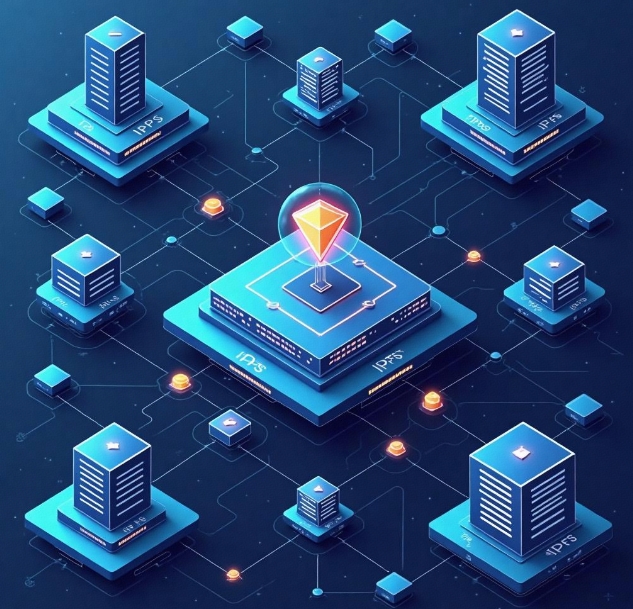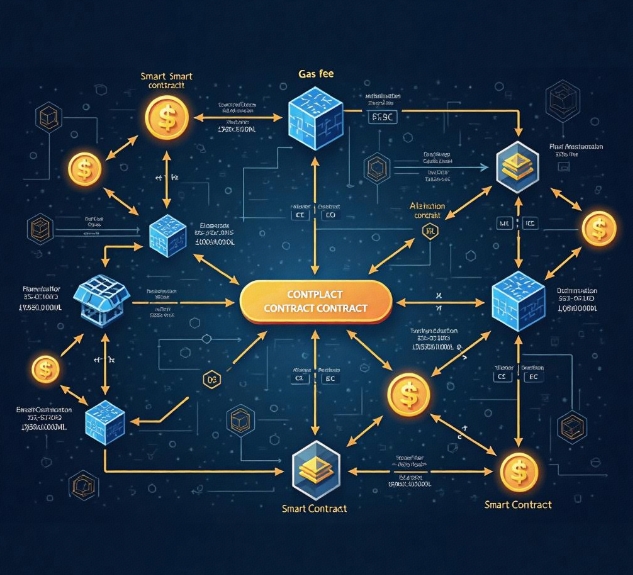How to Build High-Performance DApps: A Guide to Optimizing Decentralized Architecture
- latest articles
- 1.DApp Development & Customization: Merging Diverse Market Needs with User Experience 2.Analysis of the Core Technical System in DApp Project Development 3.How to achieve cross-chain interoperability in Web3 projects? 4.How does the tokenization of points reconstruct the e-commerce ecosystem? 5.How to Set and Track Data Metrics for a Points Mall? 6.What is DApp Development? Core Concepts and Technical Analysis 7.Inventory of commonly used Web3 development tools and usage tips 8.Development of a Distribution System Integrated with Social E-commerce 9.Six Key Steps for Businesses to Build a Points Mall System 10.What is DApp Development? A Comprehensive Guide from Concept to Implementation
- Popular Articles
- 1.Future Trends and Technology Predictions for APP Development in 2025 2.Analysis of the DeFi Ecosystem: How Developers Can Participate in Decentralized Finance Innovation 3.From Zero to One: How PI Mall Revolutionizes the Traditional E-commerce Model 4.DAPP Development | Best Practices for Professional Customization and Rapid Launch 5.Recommended by the Web3 developer community: the most noteworthy forums and resources 6.From Cloud Computing to Computing Power Leasing: Building a Flexible and Scalable Computing Resource Platform 7.How to Develop a Successful Douyin Mini Program: Technical Architecture and Best Practices 8.Shared Bike System APP: The Convenient Choice in the Era of Smart Travel 9.How to Create a Successful Dating App: From Needs Analysis to User Experience Design 10.From Design to Development: The Complete Process of Bringing an APP Idea to Life
With the continuous development of blockchain technology, decentralized applications (DApps) have become a significant force driving the growth of the blockchain ecosystem. DApps not only provide users with decentralized services but also optimize the trust mechanisms, data management, and privacy protection of traditional applications through smart contracts, decentralized storage, and other methods. However, as DApps become increasingly popular and evolve, improving their performance has become a critical issue that developers must address.
This article will discuss in detail how to build high-performance DApps and provide an optimization guide for decentralized architecture. It covers blockchain selection, smart contract optimization, front-end performance enhancement, utilization of decentralized storage, and cross-chain interaction design, comprehensively assisting developers in creating efficient, stable, and user-friendly decentralized applications.
I. Understanding DApp Architecture
Before delving into optimization strategies, it is essential to have a clear understanding of the basic architecture of a DApp. Generally, the architecture of a DApp includes the following key components:
Front-End Application: The front-end of a DApp is typically a web application that interacts with users, displays data, and triggers smart contract calls through user actions.
Smart Contracts: The core of a DApp, containing decentralized logic. All business rules, transactions, and validations are handled by smart contracts.
Blockchain: The blockchain serves as the foundation of a DApp, providing decentralized storage and consensus mechanisms to ensure data immutability and transparency.
Decentralized Storage: To store large amounts of unstructured data, DApps often rely on decentralized storage networks (such as IPFS, Arweave, etc.) to store files, images, and other data.
In the above architecture, smart contracts are closely related to the blockchain and directly impact the performance of the DApp, while front-end interactions also directly affect the user experience. Therefore, optimizing DApp performance must start with these key components.
II. Choosing the Right Blockchain Platform
Selecting a blockchain platform is the first critical step in optimizing DApp performance. Different blockchain platforms have their own advantages and disadvantages in terms of processing speed, consensus mechanisms, throughput, and costs. Therefore, it is crucial to choose a blockchain platform that suits the application's needs.
Ethereum: As the earliest smart contract platform, Ethereum has strong community support and a wide range of development tools. However, its network congestion and high transaction fees often lead to performance bottlenecks. In recent years, Ethereum 2.0 introduced Proof of Stake (PoS) and sharding technology to improve processing capacity and reduce transaction costs.
Polkadot: Polkadot's cross-chain interoperability allows multiple blockchains to work in parallel, enhancing DApp performance. Additionally, Polkadot achieves higher transaction throughput and lower latency through parachains and shared security mechanisms.
Solana: Solana is known for its extremely high throughput and low transaction fees, making it suitable for DApps requiring high-frequency transactions and large user bases. Solana's Proof of History (PoH) consensus mechanism enables faster transaction confirmation times and higher concurrency, making it ideal for developing high-performance DApps.
Avalanche: Avalanche is a highly scalable blockchain platform that achieves low-latency, high-throughput transaction processing through its unique Avalanche consensus protocol. It is suitable for DApps with high-performance requirements.
When selecting a blockchain platform, developers need to evaluate based on the DApp's functional requirements, user scale, and transaction frequency. For applications with high-performance demands, platforms like Solana and Avalanche may be better choices, while Ethereum and Polkadot are worth considering for applications prioritizing decentralization and ecosystem.
III. Smart Contract Optimization
Smart contracts are the core logic of a DApp. Optimizing the execution efficiency of smart contracts is key to improving DApp performance. Below are some suggestions for smart contract optimization:
Reduce Storage Operations: Storage operations on the blockchain are very expensive. Therefore, minimize access to on-chain storage in smart contracts. Only store essential key information on-chain and keep other data off-chain using decentralized storage.
Optimize Contract Logic: Every line of code in a contract consumes Gas. Therefore, simplify logic and avoid redundant calculations when writing smart contracts. Common optimization methods include avoiding loop calls, merging duplicate code, and avoiding complex mathematical operations.
Batch Operations: Combine multiple operations into a single batch operation to reduce the number of calls, lower transaction fees, and alleviate network congestion. For example, batch transfers and batch queries are common optimization techniques.
Gas Cost Prediction and Optimization: Using Gas prediction tools, developers can estimate the Gas cost of contract execution in advance, avoiding unexpected Gas shortages during execution that could impact the user experience.
Security Considerations: When optimizing contract performance, security must not be overlooked. Vulnerabilities and attacks often lead to smart contract execution failures or asset losses. Therefore, maintain high standards of security auditing during optimization to avoid smart contract vulnerabilities.
IV. Front-End Performance Optimization
The front-end is the primary entry point for users to interact with smart contracts in a DApp. Therefore, optimizing front-end performance directly impacts the user experience. Below are some common front-end optimization methods:
Caching Strategy: DApp front-end applications can implement caching mechanisms to store frequently used data, reducing frequent on-chain queries and API calls, thereby improving response speed.
Web3.js Optimization: Web3.js is the primary library for DApps to interact with the blockchain. By optimizing Web3.js calls and network requests, front-end performance can be significantly improved. For example, use Web3.js's event listening mechanism to avoid frequent polling of on-chain data.
Optimize UI/UX Design: The front-end interface design and user experience are crucial to the success of a DApp. A clean and smooth UI design not only enhances the user experience but also reduces waiting times during interactions, improving the application's responsiveness.
Asynchronous Loading and Lazy Loading: To improve page loading speed, the front-end can use asynchronous loading and lazy loading techniques to delay the loading of non-core data, reducing the initial rendering time.
Smart Contract Call Optimization: Minimize the frequency of interactions between users and smart contracts. Bundle multiple transactions into a single operation to avoid performance bottlenecks caused by users initiating multiple transactions.
V. Decentralized Storage Optimization
Decentralized storage (e.g., IPFS, Arweave, etc.) provides DApps with decentralized data storage solutions, but storage performance and efficiency remain important issues that need optimization. Below are some storage optimization strategies:
Choose the Right Storage Solution: Different decentralized storage solutions vary in data storage, query speed, and cost. Developers can select an appropriate storage solution based on application requirements, considering both storage costs and data access efficiency.
Layered Storage: Store infrequently accessed content in cheaper decentralized storage networks, while keeping frequently accessed data in traditional centralized databases or more efficient distributed storage systems to balance storage costs and performance.
Data Compression: To reduce storage costs and improve storage efficiency, data can be compressed. For large files or images, compression algorithms can be used to reduce data size.
VI. Cross-Chain Interaction Optimization
With the advancement of blockchain technology, more and more DApps need to interact with multiple blockchains. In such cases, cross-chain technology becomes an important means to enhance DApp performance. Cross-chain technology enables communication between different blockchains, providing greater flexibility and performance. Below are some cross-chain optimization strategies:
Choose the Right Cross-Chain Protocol: For example, Cosmos and Polkadot provide cross-chain communication capabilities, allowing developers to exchange data and interact between different blockchains through these platforms.
Reduce Cross-Chain Transaction Frequency: Cross-chain operations typically consume significant time and costs. Therefore, minimize the frequency of cross-chain transactions or reduce the number of cross-chain calls through batch operations.
Optimize Cross-Chain Security: Cross-chain transactions often involve multiple blockchains, so security must be given special attention. Use technologies such as multi-signature, cross-chain bridges, and encryption protocols to ensure the security of cross-chain interactions.
VII. Conclusion
High-performance DApps depend not only on the choice of technical architecture but also on developers' comprehensive optimization across multiple aspects, including blockchain platforms, smart contracts, front-end performance, and storage optimization. By rationally selecting blockchain platforms, optimizing smart contract logic, enhancing front-end interaction performance, and leveraging decentralized storage and cross-chain interaction technologies, developers can effectively improve DApp performance and provide a more efficient and seamless user experience.
DApp performance optimization is a complex and ongoing process. Developers must continuously keep up with technological advancements, optimize architectures, and improve user experiences to stand out in a competitive landscape.
-

DApp Development & Customization: Merging Diverse Market Needs with User Experience
As blockchain technology matures and becomes more widespread, decentralized appl···
-

Analysis of the Core Technical System in DApp Project Development
With the rapid development of blockchain technology, decentralized applications ···
-

What is DApp Development? Core Concepts and Technical Analysis
With the rapid development of blockchain technology, decentralized applications ···

 Blockchain
Blockchain












